Nestled in the heart of Vietnam‘s vibrant capital, Dinh Tien Hoang Street stands as a captivating testament to Hanoi’s rich history and dynamic present. This bustling thoroughfare, named after the founder of the Ly Dynasty, offers visitors a unique blend of ancient charm and modern energy. As you traverse this iconic street, you’ll find yourself immersed in a tapestry of cultural heritage, architectural marvels, and the pulsating rhythm of urban Vietnamese life. From its historical significance to its culinary delights, Dinh Tien Hoang Street encapsulates the essence of Hanoi, making it an essential destination for any traveler seeking to experience the true spirit of this enchanting city.
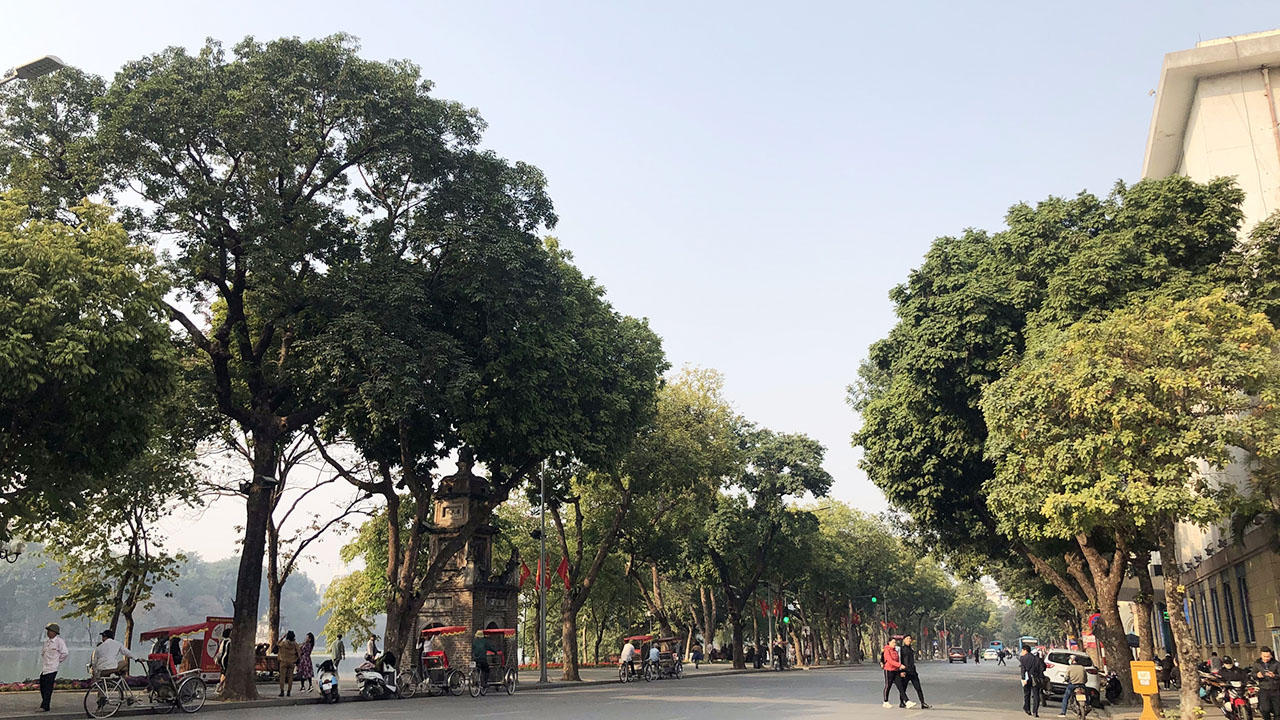
Historical Significance of Dinh Tien Hoang Street
Dinh Tien Hoang Street‘s rich history is deeply intertwined with the evolution of Hanoi itself. This thoroughfare has witnessed centuries of change, from its humble beginnings as a quiet residential area to its current status as a vibrant urban center. Understanding the historical context of this street provides invaluable insights into the broader narrative of Vietnam‘s capital city.
Development Through the Centuries
The origins of Dinh Tien Hoang Street can be traced back to the 11th century, a pivotal time when Hanoi, then known as Thang Long, was establishing itself as the capital of the Ly Dynasty. In its early days, the area that would become Dinh Tien Hoang Street was characterized by a serene landscape of traditional Vietnamese houses nestled among lush gardens. This peaceful residential district reflected the tranquil character of the era, serving as a haven for the city’s inhabitants.
As Hanoi grew and prospered over the subsequent centuries, Dinh Tien Hoang Street underwent a gradual but profound transformation. The quiet residential area began to evolve into a bustling commercial hub, attracting merchants, artisans, and craftspeople from all corners of the region. This influx of commerce and creativity played a crucial role in shaping the street’s identity and cementing its importance in the economic life of the burgeoning city.
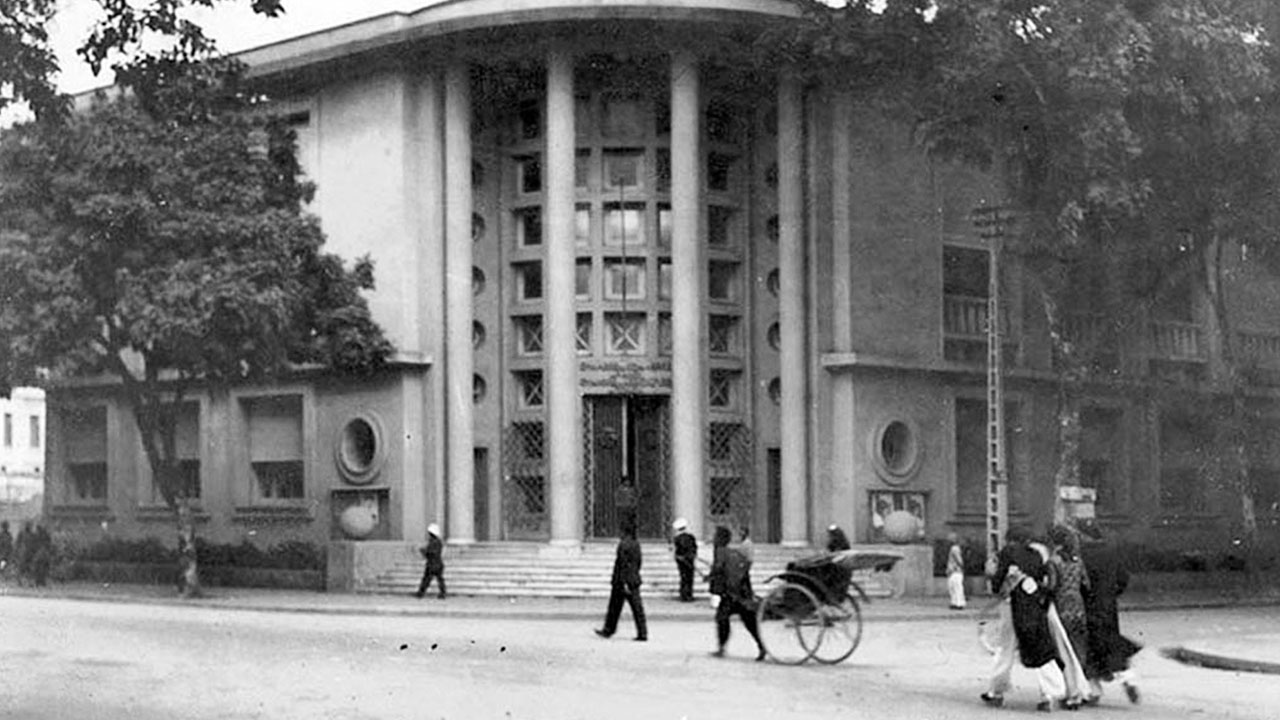
The street’s development mirrored the broader changes occurring in Hanoi. As the city expanded its influence and importance, Dinh Tien Hoang Street became a microcosm of urban growth and cultural exchange. The traditional wooden houses that once dominated the landscape began to give way to more diverse architectural styles, reflecting the various influences that shaped Hanoi’s urban fabric over time.
By the 19th century, Dinh Tien Hoang Street had firmly established itself as a vital artery in Hanoi’s urban network. The street became a melting pot of activity, where traditional Vietnamese culture blended with new ideas and influences from across Southeast Asia and beyond. This period saw the emergence of new businesses, the construction of grander buildings, and the street’s transformation into a hub of social and economic activity.
Major Historical Events Associated with the Street
Throughout its long history, Dinh Tien Hoang Street has been a silent witness to numerous pivotal events that have shaped the destiny of both Hanoi and Vietnam as a whole. Its proximity to the Imperial Citadel, the seat of power during the Ly, Tran, Le, and Nguyen Dynasties, placed it at the center of political and cultural life in the city.
One of the most significant events in the street’s history was the construction of the Hanoi Opera House in 1911. This iconic building, erected during the French colonial era, stands as a testament to the street’s role in the city’s modernization. The Opera House not only transformed the physical landscape of Dinh Tien Hoang Street but also symbolized the cultural changes sweeping through Hanoi at the time.
The tumultuous 20th century saw Dinh Tien Hoang Street become a focal point of resistance against foreign rule and the pursuit of independence. During the struggle against French colonialism, the street was often the site of clandestine meetings and demonstrations. Later, during the Vietnam War, it played a role in the city’s efforts to resist American bombing campaigns, with many buildings along the street serving as makeshift shelters and command centers.
In the post-war era, Dinh Tien Hoang Street has continued to be at the forefront of Hanoi’s development. The economic reforms of the 1980s and 1990s brought new life to the street, with an influx of businesses and a resurgence of commercial activity. Today, the street stands as a living museum, where layers of history coexist with the vibrancy of modern urban life.
Cultural Aspects of Dinh Tien Hoang Street
Dinh Tien Hoang Street is not merely a physical thoroughfare; it is a cultural artery that pulses with the lifeblood of Hanoi’s rich heritage. This iconic street encapsulates the essence of Vietnamese culture, from its architectural marvels to its profound influence on the arts. As we delve into the cultural tapestry of Dinh Tien Hoang Street, we uncover a world where tradition and modernity intertwine, creating a unique and captivating urban landscape.
Architectural Styles and Influence
The architectural landscape of Dinh Tien Hoang Street is a visually stunning testament to the diverse historical influences that have shaped Hanoi over the centuries. Walking along this storied street is akin to traversing a timeline of Vietnamese architectural evolution, with each building telling its own unique story.
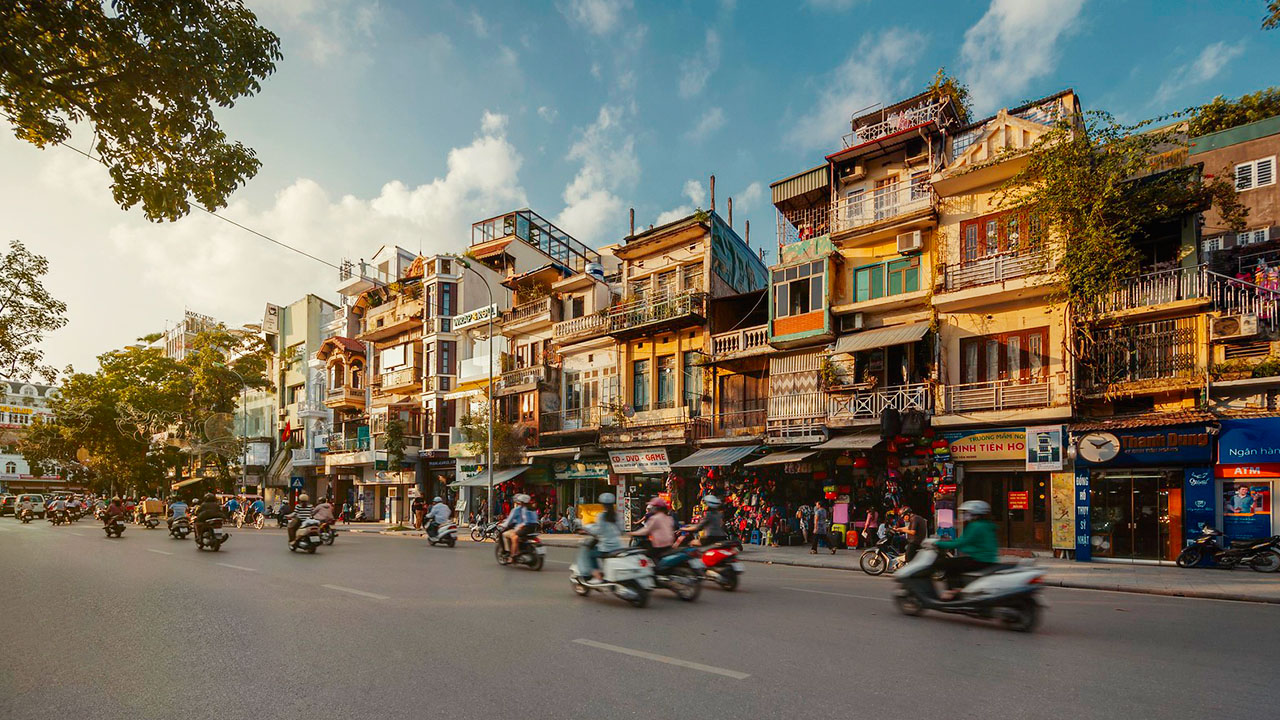
Traditional Vietnamese architecture forms the foundation of the street’s aesthetic. These structures, characterized by their sloping tile roofs, intricate wooden details, and harmonious proportions, speak to the enduring beauty of Vietnam‘s architectural heritage. Many of these buildings feature courtyards and gardens, reflecting the Vietnamese emphasis on connecting indoor and outdoor spaces.
Interspersed among these traditional edifices are grand examples of French colonial architecture. These buildings, with their neoclassical facades, elegant balconies, and imposing presence, are remnants of the French colonial period. The juxtaposition of these European-influenced structures against the backdrop of traditional Vietnamese buildings creates a captivating visual dialogue between East and West.
As the street progressed through the 20th century, modernist influences began to make their mark. Sleek lines, innovative use of materials, and a focus on functionality characterize these more contemporary additions to the streetscape. Despite their modernity, many of these buildings incorporate elements of traditional Vietnamese design, creating a unique architectural fusion.
The street’s skyline is punctuated by religious structures that add spiritual depth to its architectural narrative. Ornate gates of ancient pagodas stand in silent reverence, their intricate carvings and vibrant colors a stark contrast to the more austere facades of nearby buildings. These spiritual landmarks serve as anchors of Vietnamese cultural identity amidst the ever-changing urban landscape.
Role in Vietnamese Literature and Arts
Dinh Tien Hoang Street has long been a wellspring of inspiration for Vietnamese artists and writers, its vibrant atmosphere and rich history providing fertile ground for creative expression. The street’s ability to capture the essence of Hanoi life has made it a recurring motif in Vietnamese literature, poetry, and visual arts.
In literature, Dinh Tien Hoang Street has been immortalized by countless authors who have drawn upon its unique character to set their stories. Novels and short stories set on or around the street often use its diverse cast of characters and ever-changing scenery as a microcosm of Vietnamese society. Writers have expertly woven tales of love, loss, struggle, and triumph against the backdrop of this iconic thoroughfare, allowing readers to experience the pulse of Hanoi life through their words.
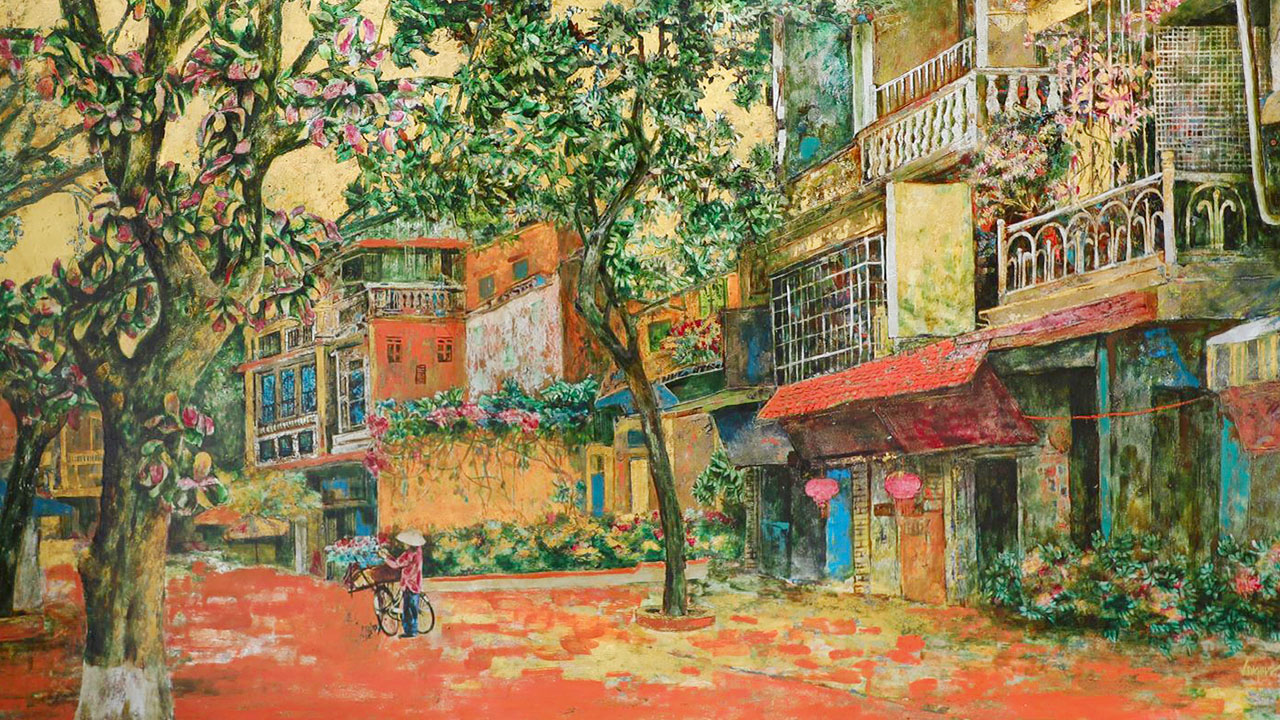
Poetry, too, has found a muse in Dinh Tien Hoang Street. Verses have been penned celebrating the street’s beauty in different seasons, capturing the play of light on colonial facades, or reflecting on the street’s role as a witness to history. These poems often draw parallels between the street’s endurance and the resilience of the Vietnamese spirit, elevating Dinh Tien Hoang from a mere location to a symbol of national identity.
Visual artists have long been captivated by the street’s aesthetic appeal. Painters have sought to capture its unique atmosphere on canvas, from bustling street scenes teeming with life to quiet corners where time seems to stand still. The interplay of light and shadow, the blend of architectural styles, and the vibrant street life provide endless inspiration for artists seeking to portray the essence of Hanoi.
Photography has played a crucial role in documenting the evolution of Dinh Tien Hoang Street over the years. From early black and white images capturing the street’s colonial-era grandeur to contemporary photographs showcasing its modern vibrancy, these visual records provide a fascinating glimpse into the street’s transformation over time.
Modern Dinh Tien Hoang Street
Today, Dinh Tien Hoang Street stands as a vibrant testament to Hanoi’s ability to seamlessly blend its rich historical legacy with the dynamism of modern urban life. This iconic thoroughfare has evolved into a multifaceted destination that caters to locals and tourists alike, offering a unique glimpse into the heart of Vietnam‘s capital. As we explore the contemporary face of Dinh Tien Hoang Street, we uncover a world where tradition and progress coexist in harmonious balance.
Current Usage and Attractions
Dinh Tien Hoang Street has maintained its status as a bustling commercial district, pulsating with activity from dawn to dusk. The street’s economic vitality is evident in the diverse array of businesses that line its length, catering to a wide range of needs and interests.
One of the most striking features of modern Dinh Tien Hoang Street is its vibrant street food scene. The aromas of sizzling meats, fragrant herbs, and rich broths waft through the air, enticing visitors from all corners of the city. Street vendors and small eateries offer an authentic taste of Hanoi cuisine, from steaming bowls of pho to crispy banh mi sandwiches. These culinary experiences not only satisfy the taste buds but also provide a window into the daily life and traditions of the local community.
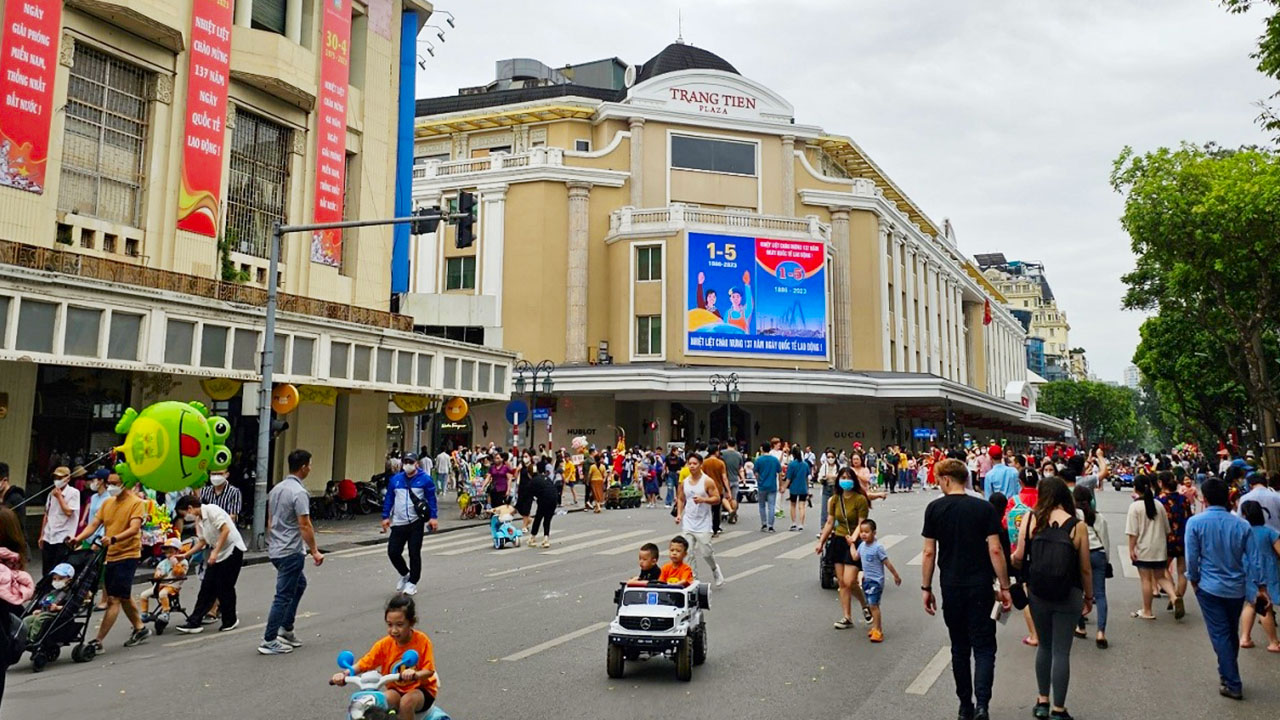
Interspersed among the traditional food stalls are upscale boutiques and modern retail establishments. These shops offer a mix of local handicrafts, designer clothing, and contemporary Vietnamese art, reflecting the street’s evolution as a fashion and design hub. The juxtaposition of age-old culinary traditions with cutting-edge fashion creates a unique shopping experience that encapsulates the spirit of modern Hanoi.
Cultural attractions continue to play a significant role in the street’s contemporary identity. The historic Hanoi Opera House, a crown jewel of French colonial architecture, remains a focal point of the street. This grand edifice continues to host a diverse range of performances, from traditional Vietnamese opera to international orchestral concerts, cementing Dinh Tien Hoang Street‘s status as a cultural epicenter.
Nearby museums and galleries provide visitors with deeper insights into the city’s rich cultural heritage. These institutions offer carefully curated exhibitions that showcase Vietnamese art, history, and traditions, serving as vital links between the street’s storied past and its vibrant present.
Events and Festivals Celebrated on the Street
Dinh Tien Hoang Street truly comes alive during the numerous festivals and events celebrated throughout the year. These occasions transform the street into a vibrant stage for showcasing Vietnam‘s rich cultural tapestry and artistic talents.
The Lunar New Year, or Tet, is undoubtedly the most significant celebration on Dinh Tien Hoang Street. During this time, the street is adorned with colorful decorations, lanterns, and flower displays. The atmosphere is electric, with locals and tourists alike partaking in traditional games, sampling festive treats, and enjoying cultural performances. The street becomes a microcosm of nationwide celebrations, offering visitors a unique opportunity to immerse themselves in this important Vietnamese holiday.
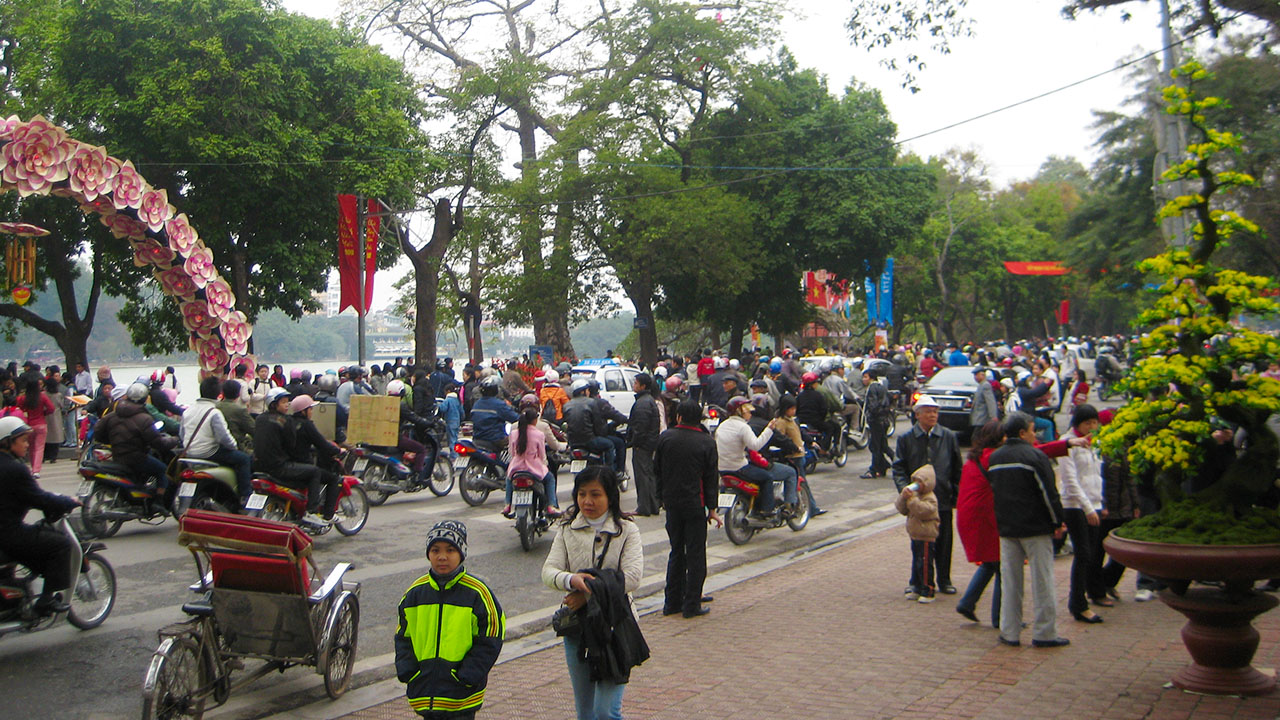
Throughout the year, Dinh Tien Hoang Street plays host to various cultural festivals that celebrate different aspects of Vietnamese heritage. The Mid-Autumn Festival, for instance, sees the street illuminated with hundreds of lanterns, while children parade with colorful masks and enjoy mooncakes. These events not only preserve cultural traditions but also foster a sense of community among residents and visitors.
Art and music festivals have become increasingly popular on Dinh Tien Hoang Street in recent years. These events transform the street into an open-air gallery or concert venue, showcasing the works of local artists and musicians. Such festivals not only provide a platform for emerging talents but also contribute to the street’s reputation as a hub of creativity and innovation.
Food festivals are another highlight of the Dinh Tien Hoang Street calendar. These culinary celebrations bring together vendors and chefs from across the city, offering a gastronomic journey through Vietnam‘s diverse regional cuisines. From street food competitions to gourmet tasting events, these festivals cement the street’s status as a food lover’s paradise.
Important Landmarks Along Dinh Tien Hoang Street
Dinh Tien Hoang Street is more than just a thoroughfare; it’s a living museum that showcases Hanoi’s rich historical and cultural tapestry. As you traverse this iconic street, you’ll encounter a series of landmarks that have played pivotal roles in shaping the city’s identity. From architectural marvels to tranquil green spaces, each landmark along Dinh Tien Hoang Street tells a unique story of Hanoi’s past and present.
Notable Buildings and Their History
The architectural landscape of Dinh Tien Hoang Street is a testament to the various influences that have shaped Hanoi over the centuries. Each building stands as a silent witness to the city’s evolution, offering visitors a glimpse into different eras of Vietnamese history.
One of the most prominent landmarks on Dinh Tien Hoang Street is the Hanoi Opera House. This architectural masterpiece, completed in 1911, is a stunning example of French colonial design. Modeled after the Palais Garnier in Paris, the Opera House features a grand facade adorned with Corinthian columns, intricate reliefs, and a sweeping staircase. The building’s interior is equally impressive, with its ornate frescoes, crystal chandeliers, and luxurious red velvet seats.
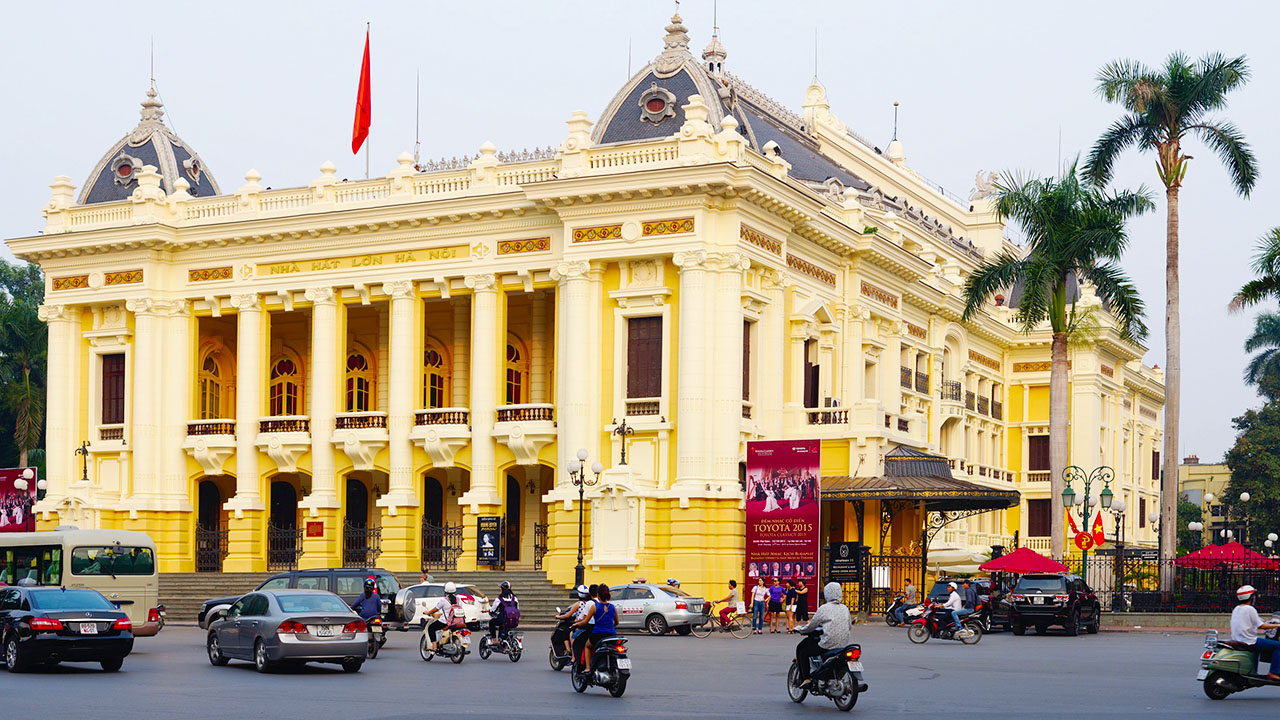
Throughout its history, the Hanoi Opera House has been more than just a venue for performances; it has been a symbol of Hanoi’s cultural renaissance. During the Vietnam War, the building was used as a shelter and a meeting place for revolutionary leaders. Today, it continues to host a diverse range of performances, from traditional Vietnamese opera to international ballet and symphony concerts.
Another significant landmark is the Thang Long Imperial Citadel, a UNESCO World Heritage site located near Dinh Tien Hoang Street. This ancient complex served as the political center of Vietnam for 13 consecutive centuries. The citadel comprises various structures, including the central flag tower, the Doan Mon gate, and the Kinh Thien Palace foundation.
Visitors to the Imperial Citadel can explore its vast grounds, which offer a fascinating journey through Vietnamese history. The site includes archaeological areas that have revealed artifacts dating back to the 6th century, providing tangible links to the country’s ancient past. The juxtaposition of these historical remains against the backdrop of modern Hanoi creates a poignant reminder of the city’s enduring legacy.
The French Quarter, through which Dinh Tien Hoang Street runs, is itself a landmark area. This neighborhood is characterized by wide boulevards lined with mature trees and grand colonial-era buildings. Many of these structures now house government offices, embassies, and upscale hotels, but their architectural beauty remains a testament to Hanoi’s colonial past.
One notable building in the French Quarter is the Sofitel Legend Metropole Hanoi, a luxury hotel that has been a city landmark since 1901. This elegant structure, with its white facade and green shutters, has hosted numerous dignitaries and celebrities over the years. The hotel’s bomb shelter, discovered in 2011 and now open for tours, offers a sobering glimpse into the city’s wartime experiences.
Parks and Open Spaces in the Area
While Dinh Tien Hoang Street is known for its bustling urban atmosphere, it also provides access to several tranquil green spaces that offer respite from the city’s frenetic pace. These parks and open areas not only enhance the street’s aesthetic appeal but also serve as important community gathering places.

The most iconic of these spaces is Hoan Kiem Lake, located just a short distance from Dinh Tien Hoang Street. This picturesque lake, whose name translates to “Lake of the Returned Sword,” is steeped in legend and holds a special place in the hearts of Hanoi’s residents. According to folklore, the lake is where Emperor Le Loi returned a magical sword to the Golden Turtle God after using it to drive out Chinese invaders in the 15th century.
Today, Hoan Kiem Lake serves as a central point of relaxation and recreation for locals and tourists alike. Its tranquil waters, surrounded by lush greenery, provide a stark contrast to the bustling streets nearby. Early mornings see the lake’s banks filled with people practicing tai chi or jogging, while evenings bring couples and families out for leisurely strolls.
At the northern end of the lake sits Ngoc Son Temple, accessible via the iconic red-painted wooden bridge known as The Huc (Morning Sunlight Bridge). This temple, dedicated to various historical figures including the 13th-century military leader Tran Hung Dao, offers visitors a serene retreat and a glimpse into Vietnamese spiritual traditions.
Another significant green space near Dinh Tien Hoang Street is the Ly Thai To Garden. Named after the founder of the Ly Dynasty, this park features a prominent statue of the emperor and serves as a popular gathering spot. The garden’s well-manicured lawns and vibrant flower beds provide a pleasant visual breakand invite visitors to relax amidst the urban hustle.
As you wander through the Ly Thai To Garden, the symphony of chirping birds and rustling leaves offers a soothing counterpoint to the noise of the city. Art installations scattered throughout the park enhance its cultural significance, allowing for contemplation and appreciation of Vietnamese artistry.
The harmonious blend of nature and culture creates an atmosphere that reflects the essence of Hanoi itself—one steeped in history yet vibrantly alive. In this garden, families gather for picnics, children play, and couples share moments of romance under the shade of ancient trees.
Visitor Information for Dinh Tien Hoang Street
Navigating Dinh Tien Hoang Street can be an enriching experience, but knowing when to visit and how to make the most of your time there will undoubtedly enhance your journey. Hanoians take great pride in their city, and as a visitor, understanding the pulse of the street will enrich your exploration.
Best Times to Visit
The best time to experience Dinh Tien Hoang Street is during the cooler months from September to November, when the temperatures are mild, and the skies are mostly clear. This period coincides with many cultural festivals, giving visitors a chance to witness various celebrations rich in tradition.
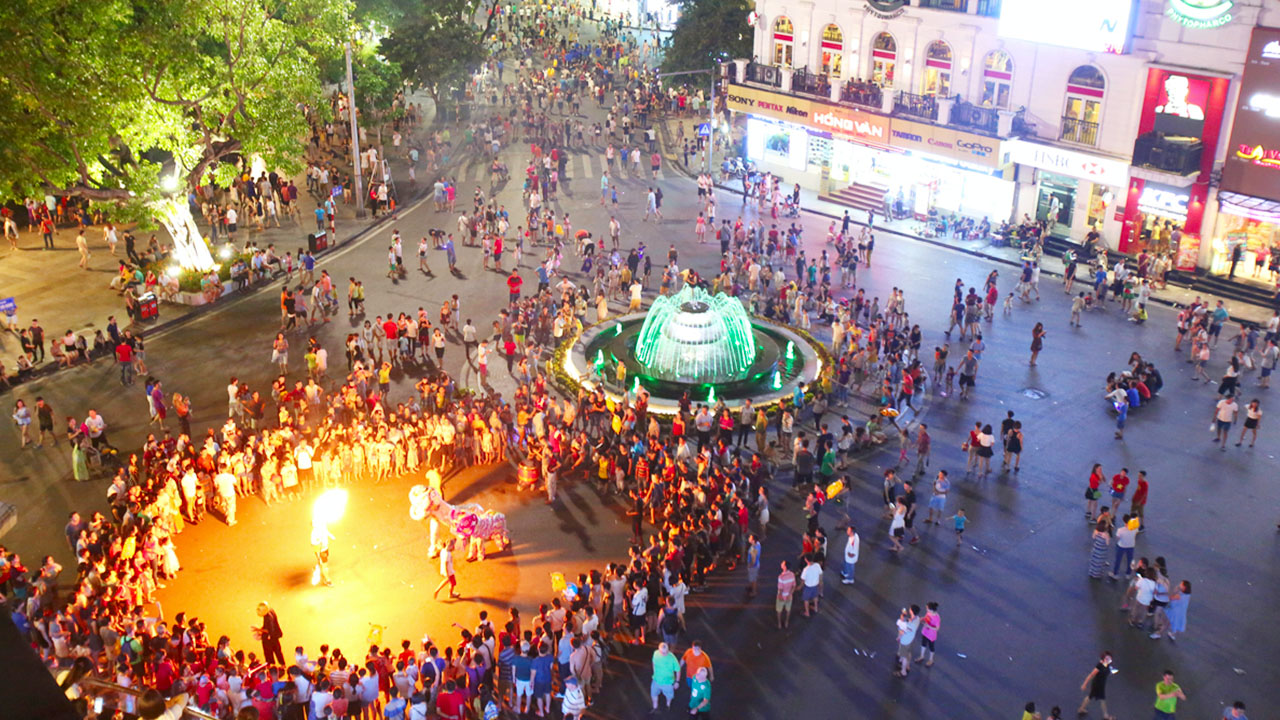
Early mornings are particularly magical on Dinh Tien Hoang Street, especially around Hoan Kiem Lake. As the sun rises, local residents engage in tai chi, creating a serene scene infused with purposefulness. The tranquility of the morning is juxtaposed sharply with the vibrant hustle that characterizes later hours.
Evenings bring a different charm altogether. The setting sun casts a warm glow over the street as street hawkers set up their stalls, inviting you to sample local delicacies. This vibrant atmosphere, coupled with the melodic sounds of live musicians, transforms Dinh Tien Hoang into a hub of activity after dark.
Tips for Exploring the Street
To make the most of your visit to Dinh Tien Hoang Street, immerse yourself in its authenticity. Start your journey by meandering through the various markets and art galleries that showcase local artisans. Taking the time to interact with the vendors can lead to insightful stories about their crafts and businesses, fostering personal connections.
For those who appreciate photography, don’t forget your camera! The architectural beauty of the landmarks along Dinh Tien Hoang Street provides endless opportunities for striking photographs. Experimenting with angles and lighting during different times of the day can yield fascinating contrasts, capturing both the historical aspects and modern vibrancy of the street.
Moreover, be sure to indulge in the culinary offerings that line Dinh Tien Hoang. Venture off the main path to discover hidden eateries and food stalls offering regional specialties. This gastronomic exploration accentuates the sense of community and shared culture within Hanoi’s streets and allows you to experience the true flavors of Vietnam.
Gastronomy Around Dinh Tien Hoang Street
Dinh Tien Hoang Street isn’t just a feast for the eyes; it also tantalizes taste buds with its diverse array of culinary options. As you explore the area, you’ll discover a fusion of traditional and contemporary dishes reflecting Vietnam’s rich culinary heritage. Each dish has stories intertwined with history, showcasing the intricacies of regional flavors.
Traditional Dishes to Try Nearby
Vietnamese cuisine is renowned for its balance of flavors, and near Dinh Tien Hoang Street, you’re spoiled for choice. One must-try dish is pho, a fragrant noodle soup typically served with thinly sliced beef or chicken and garnished with fresh herbs. While you may find pho at many establishments, those around Dinh Tien Hoang often boast secret family recipes that elevate this dish to sublime heights.
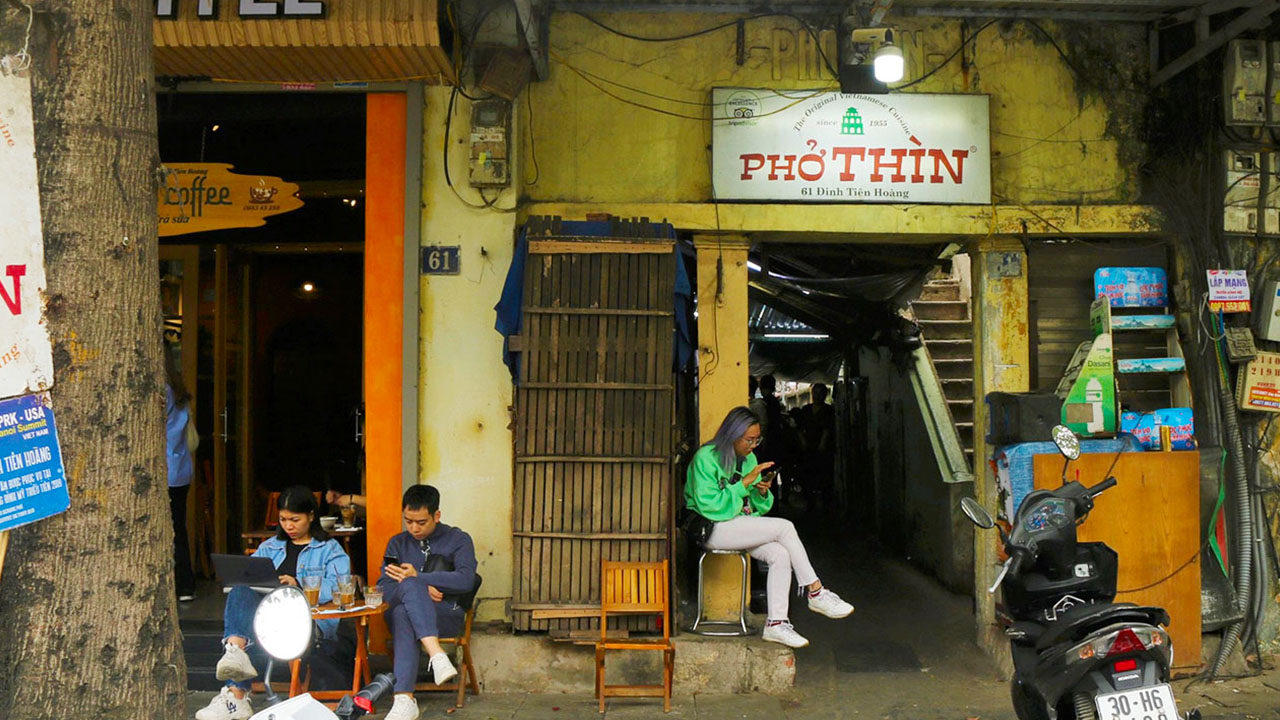
Another iconic dish to consider is bun cha, a delightful combination of grilled pork, vermicelli noodles, and a side of dipping sauce. The blend of smoky meat, vinegary sauce, and fresh herbs presents a mouthwatering explosion of flavors. Paired with crispy spring rolls known as nem, this meal is straightforward yet incredibly satisfying.
Lastly, don’t miss out on bánh mì, the famed Vietnamese sandwich that encapsulates the harmony of French and Vietnamese textures and tastes. With its crusty baguette filled with savory meats, fresh vegetables, and flavored sauces, it’s an essential snack to grab while exploring. Opt for one from a local vendor for an authentic experience that captures Hanoi’s eclectic spirit.
Popular Cafés and Restaurants
Beyond traditional street food, Dinh Tien Hoang Street and its surroundings feature several popular cafés and restaurants perfect for leisurely meals or quick snacks. For coffee lovers, visiting a cà phê (Vietnamese café) adjacent to the street can be a transformative experience. These cafés serve the quintessential Vietnamese drip coffee, which boasts a unique blend of strong, robust flavors enhanced with sweetened condensed milk.

One notable venue is Café Giảng, famed for its egg coffee, a local specialty that combines whipped egg yolk, sugar, and condensed milk to create a creamy, dessert-like drink. Visitors often rave about the rich flavor—a hidden gem that should not be missed.
For sit-down dining, Quince Eatery serves modern interpretations of traditional dishes. Its chic interior paired with expertly curated menus showcases how traditional Vietnamese ingredients can be reimagined in creative ways. Dining here offers insight into the evolution of Vietnamese cuisine while indulging in a comfortable, sophisticated environment.
Conclusion
Dinh Tien Hoang Street tells a complex tale—a narrative woven from layers of history, culture, and everyday life. An exploration of this vibrant thoroughfare reveals not just remarkable architectural landmarks or delectable culinary offerings, but also the spirit of a city that embraces its past while confidently stepping into the future. Whether traversing through its historic sites, savoring local delicacies, or simply enjoying the greenery that punctuates the urban landscape, every moment spent here becomes part of a larger story—one that continues to evolve, inviting each visitor to contribute their slice of memory.


